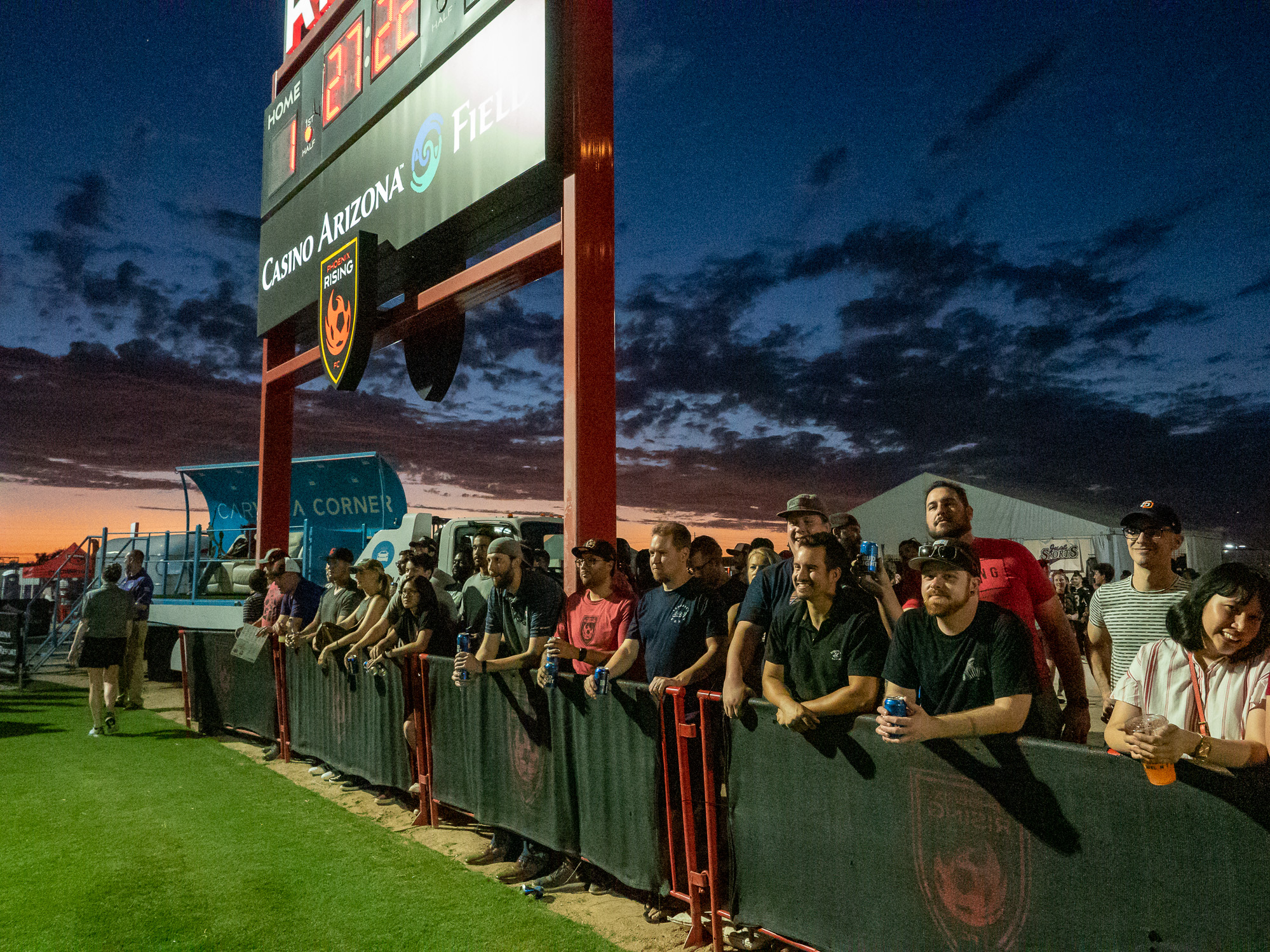Welcome back to Rising Tactics Recap, a weekly column where I attempt to provide insight to Phoenix Rising fans by breaking down some strategic and tactical observations from Phoenix’s latest match.

The number three is very relevant to Phoenix Rising right now. Saturday’s 4-2 win over the Real Monarchs was their third consecutive league victory.
The number three is also relevant to this column. At the end of RTR, I usually include a short section called The Final Third as a way to record three quick thoughts before the next match.
This week’s edition of Rising Tactics Recap is even more reliant on the idea of thirds.
Because there was no replay of Saturday’s game on available ESPN+ at the time of writing, I’m not going dive into nitty-gritty visual sequences from the game. Instead, I’m going to multiply The Final Third by three.
Sit back, relax, and enjoy nine Phoenix Rising-related thoughts to tide you until next week’s game.
1. Numerical abbreviations for formations can be misleading. Yes, a simple three or four number sequence can be a helpful guide to a team’s general setup, but it doesn’t tell the whole tactical story.
Just look at Phoenix Rising’s 4-3-3 formation. On paper, it looks like the back four, midfield three, and front three are separate positional units.

However, if you have watched Phoenix Rising play over the last few weeks, you can see that there is more overlap between Rick Schantz’s positional groups than a simple formation abbreviation or lineup graphic would lead you to believe. In their win over the Real Monarchs on Saturday, Phoenix’s defensive, midfield, and forward groups looked like one unit.
Right now, Schantz has found the balance between positional defensive discipline and attacking fluidity and it’s wonderful to watch.

2. I’d like to take a second to appreciate the transfer business that Phoenix Rising’s decision-makers did over the offseason. While Mustapha Dumbuya has been inconsistent at right back, Adam Jahn, Junior Flemmings, José Aguinaga, AJ Cochran, and Joey Calistri have each been productive additions to the team so far this season.
Jahn is one of the hottest forwards in USL (more on him in a minute), Flemmings has truly made the left wing spot his own, Aguinaga works hard defensively and provides a calming presence in the attack, and AJ Cochran has been a consistent starter as the right-sided center back. Joey Calistri is even starting to acclimate to his role as a key substitute and is perfectly comfortable out wide or in central midfield.
The fact that Phoenix’s front office and coaching staff nailed five out of their six permanent signing is extremely impressive.

3. Jahn is tearing up opposing defenses right now. He has scored in five straight matches and even the non-goalscoring parts of his game have been excellent over the past month. Against the Real Monarchs, Jahn’s timely movement and his ability to drop into midfield, control the ball, and pass out wide or forward were extremely valuable, especially in the second half.
4. I do not think Phoenix Rising has ever had a more skilled starting midfield in the history of the club. Jon Bakero’s skill is incredibly obvious. He can impact the game from anywhere in central midfield or the forward line.
Aguinaga has an under-rated amount of technical ability. He had two assists against the Monarchs and is starting to show that he can play the final ball and control the ball in tight spaces to keep possession.
I love how Aguinaga’s uses his body and a clever turn to keep the ball in bounds and send RSL right back Brooks Lennon for a little spin right before his assist to Jahn:
Kevon Lambert’s quality should never go unnoticed simply because he looks much more like a defensive destroyer than a technical maestro. He has a soft touch and uses his long frame to reach and settle loose balls before anyone else on the field can. Lambert still gets himself into pickles in midfield, but he’s so good on the ball that he can often erase his own mistakes.
5. Defensive lapses are a concern for Phoenix Rising right now. The Real Monarchs took advantage of lackadaisical defending from Phoenix on both of their early goals. I’ll be curious to watch (and listen) for more chatter from the backline over the next couple of weeks to see if added emphasis on communication helps eliminate the defensive issues that plagued Phoenix on Saturday.
6. While it was unfortunate (for the Monarchs) that Saturday’s game was played in a mostly empty stadium, the intimate atmosphere provided multiple auditory benefits. Not only could you hear Phoenix Rising’s loud traveling support throughout the match, but you could also hear some of Schantz’s instructions to his team (and complaints to the officiating crew) during the game.
From the audio, a couple of Schantz’s main in-game priorities are pushing his ball-side fullback higher up the field and making sure that at least one central midfielder drops deep to collect the ball and maintain proper spacing. If Phoenix Rising ever want to put microphones on the coaching staff, I’ll be the first person in line for the audio.
7. After last week’s win over Las Vegas, Justin Vibber asked me this question:
In the last two games, Phoenix Rising have scored more goals from transitional moments than they have from long passing sequences. How does that fit in with Schantz’s idea of using possession as an offensive tool? It fits in quite nicely.
Phoenix do not want to keep the ball simply for the sake of seeing it roll back and forth across the grass. They want to move the ball quickly from side-to-side to create gaps in the opposition and move the ball forward quickly on counter attacks. Phoenix’s ability to rotate possession laterally creates opportunities for them to move up the field in transition.
Opposing defenses now have to be prepared to defend both of those attacking methods. The eight goals that Phoenix have scored over their last two league games make it clear: defending against a multi-faceted attack is very, very hard.
8. Andrew Wheeler-Omiunu came on for Junior Flemmings in the 90th minute on Saturday and became the third FC Tucson player to play for Phoenix Rising this season. With Phoenix likely to lose one or both of Lambert and Flemmings for a stretch of games during the Gold Cup in June, having depth options available to call-up from Tucson will be extremely important.
9. Solomon Asante finished off Saturday’s game by scoring the dagger in the 81st minute, so it only seems fitting that he should finish off this week’s RTR. Asante has been in his best form of the season over the last two weeks. He is making plays on the right side of the field without playing in an overly individualistic fashion. In the past, I’ve called this “The Asante Dilemma”.
You want your playmaker to get plenty of touches, but if you defer to him too much, then the rest of your attacking scheme starts to deteriorate.
Phoenix has found the perfect balance with their attacking setup. Solo is getting on the ball, scoring goals, and making key passes, but his teammates are not using him as their only attacking outlet.
Thanks for reading this week’s edition of Rising Tactics Recap! Check back next week for more insight and analysis.




